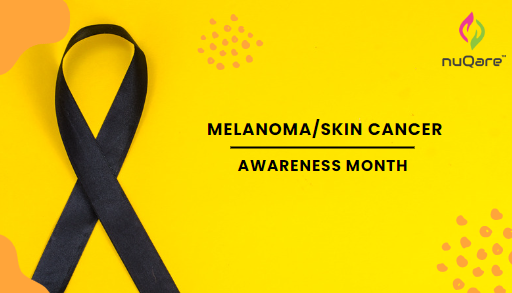May is recognized as National Melanoma/Skin Cancer Detection and Prevention Month. This important campaign aims to raise awareness about skin cancer, promote prevention strategies, and encourage early detection.By understanding the risks associated with excessive sun exposure and adopting preventive measures, we can protect ourselves and reduce the incidence of skin cancer.Melanoma is the most serious type of skin cancer. It develops from melanocytes, the cells that produce pigment in the skin. Melanoma can appear anywhere on the body, but it is most common on the back, chest, and legs.

Risk Factors
The risk factors for melanoma include:
- Fair skin
- A family history of melanoma
- A personal history of sunburns
- A personal history of other types of skin cancer
- Exposure to ultraviolet (UV) radiation from the sun or tanning beds
Recognizing Symptoms & Prevention
The most common symptom of melanoma is a new mole or a change in an existing mole. Melanomas can also appear as a flat, discoloured area of skin.
Melanomas are often described as ABCDE:
- Asymmetry: One half of the mole does not look like the other half.
- Border irregularity: The border of the mole is not smooth.
- Colour variation: The mole is not one uniform colour.
- Diameter: The mole is larger than 6 millimeters (about the size of a pencil eraser).
- Evolving: The mole is changing in size, shape, or colour
The best way to prevent melanoma is to protect yourself from UV radiation. You can do this by:
- Wearing sunscreen with an SPF of 30 or higher every day, even on cloudy days
- Wearing protective clothing, such as a hat and sunglasses
- Avoiding tanning beds and artificial UV sources
Promoting Early Detection & Treatment
In addition to professional check-ups, performing self-examinations can aid in detecting skin cancer early. Follow these steps:
- Examine your skin from head to toe, including hard-to-see areas like your scalp and back.
- Look for any new moles, growths, or changes in existing moles.
- Pay attention to any spots that itch, bleed, or do not heal.
- If you find a new mole or a change in an existing mole, see your doctor right away.
The treatment for melanoma depends on the stage of the cancer. Early-stage melanoma can often be cured with surgery. More advanced melanoma may require other treatments, such as radiation therapy, chemotherapy, or immunotherapy.
Conclusion
Skin Cancer Detection and Prevention Month serves as a reminder to prioritize our skin health and take proactive steps to prevent skin cancer. By understanding the risks, recognizing the signs, practicing sun protection, and supporting research efforts, we can work towards a future where skin cancer is less prevalent.Let’s take proper care of our skin, perform self-examination, consult with your doctor, and protect ourselves from Skin Cancer.

